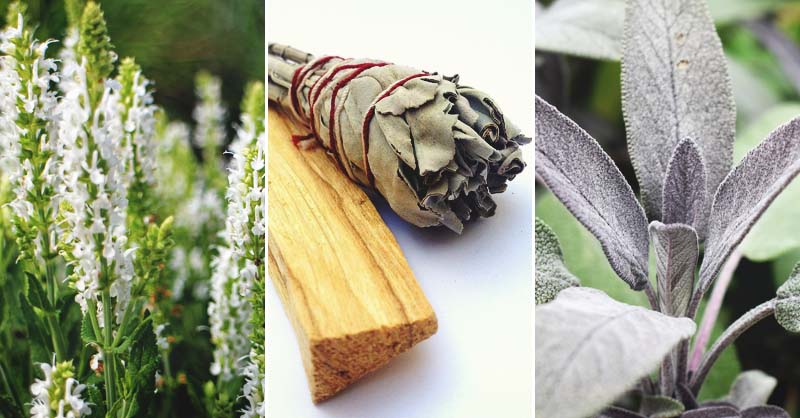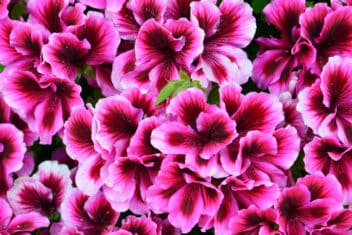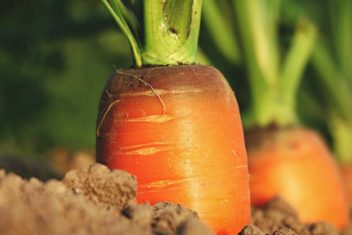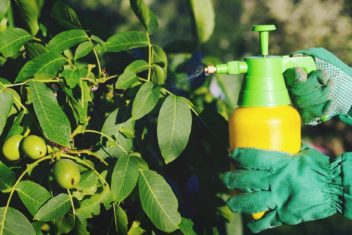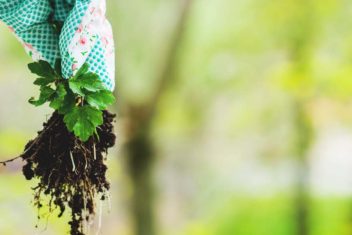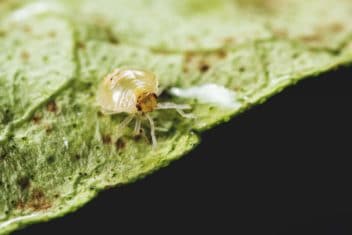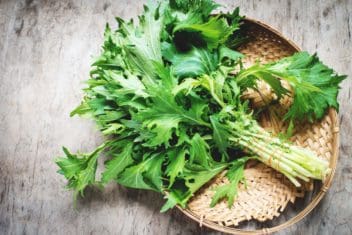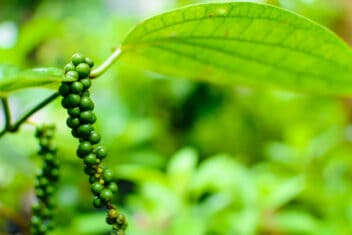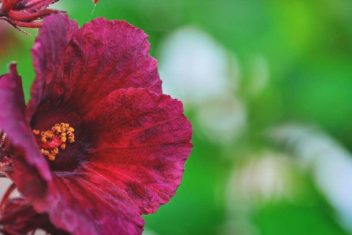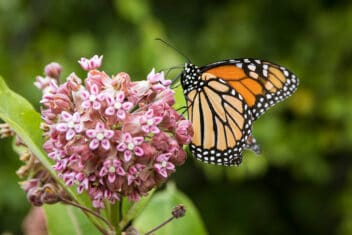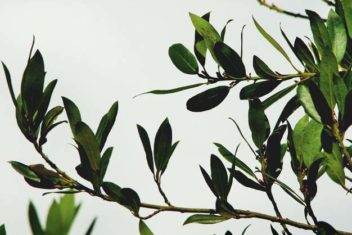White sage is a desert native, but thanks to a rise in popularity of the practice of smudging, more people are interested in raising the attractive herb in their neck of the woods. If you don’t live in a desert climate, you may have wondered if you can succeed at growing white sage, but never fear. It takes a little extra work, but you can grow it almost anywhere.
White Sage (Salvia apiana) makes a beautiful landscape plant, as well as a medicinal herb. The silver/green leaves contain aromatic oils, and the flowers are popular with honey bees. Of course, white sage is also an important plant in spiritual cleansing ceremonies.
Whether you plan to use it for smudging or you are looking for a beautiful addition to your garden, white sage is a delight to have around thanks to its sumptuous scent and unique silver leaves.
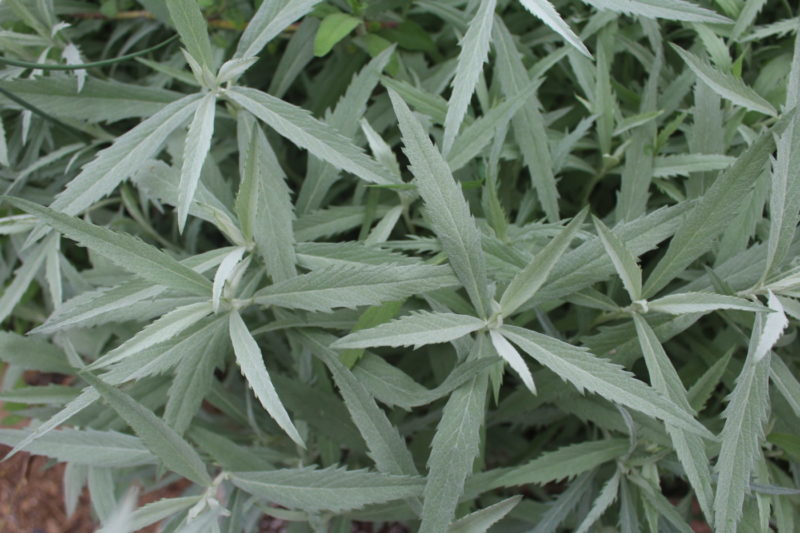
You can use a number of different herbs in smudging rituals, including common sage, lavender sage, cedar, pinon pine, juniper or rosemary. For many people, however, white sage is the only way to go.
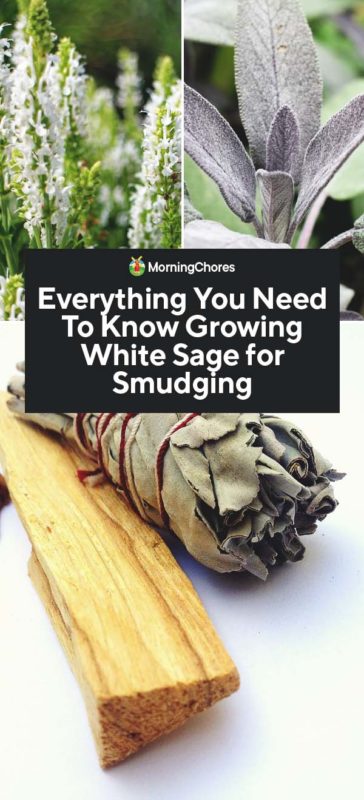
What is White Sage?
White sage is part of the larger sage family (Salvia) and is closely related to common sage (Salvia officinalis). Sages, in turn, are members of the much larger mint family.
There are a variety of sages including pineapple sage, blue sage, and scarlet sage. There’s even a variety called Death Valley Sage (Salvia funereal).
Don’t confuse Dakota white sage, also known as white sagebrush, with white sage. It’s not a sage, but a member of the Artemisia family and is related to wormwood. Likewise, mountain sage (Artemisia tridentate) isn’t a true sage, either.
Planting
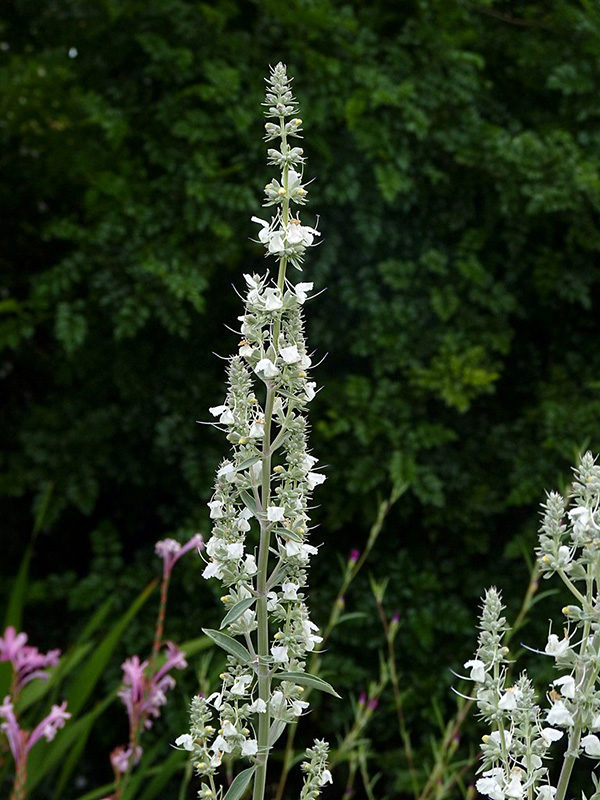
White sage is a perennial evergreen in warm climates. In cooler climates, it will die down and come back in the spring. White sage can’t survive the winter in cold climates.
I don’t have ideal conditions in my Kentucky garden, so I planted my white sage in a raised bed in a greenhouse. I vent the sides of my greenhouse because it often reaches 100°F or more on a sunny July day. The greenhouse also keeps my sage protected during the cold winters.
If you have less-than-ideal conditions, you’ll want to do something similar. Or you can plan on bringing your plant indoors during the winter.
Growing Zones
White sage is native to the southwestern United States, zones 8-9, so as you’d expect, it prefers sunny, warm conditions. Grow as an annual in cold climates, or bring indoors during the freezing weather.
Sun and Soil Requirements
This desert plant needs full sun – as much as it can get. It also prefers sandy, extremely well-drained soil. Excess moisture will kill white sage.
Growing White Sage From Seeds
It can be challenging to grow white sage from seeds because the germination rate is low. Consequently, if you opt to grow from seed, you’ll need to overplant to compensate for the 30% or lower germination rate.
Start seeds inside about eight weeks before the last frost. Plant them about 1/4 inch deep in a light seedling mixture. Put two or three seeds in each pot.
Germination takes up to two weeks in a room that’s between 65-70°F. Mist soil lightly with water and keep seeds in full sun or under a plant light.
Transplanting
When the plants are four inches tall, and the soil temperature is above 55°F, you can transplant them outside. Give them a hardening off period of about seven days.
Growing From Cuttings
Many gardeners will have better luck with growing white sage from cuttings. I had one plant gifted to me by a friend and look what happened!
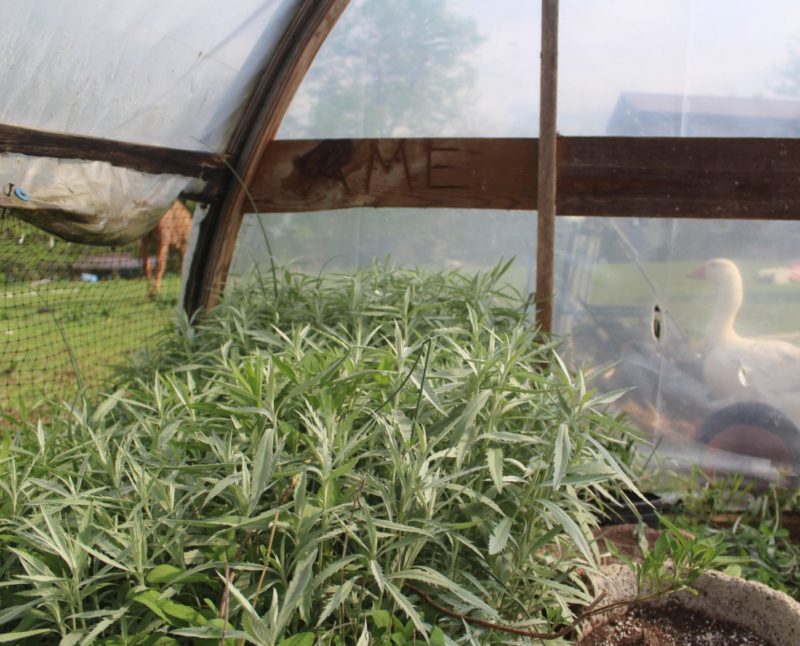
Growing from cuttings can also be a challenge. Germination from cuttings averages 20%. To get your cuttings to thrive, here are some tips:
Tips for Establishing Cuttings
- Get young cuttings from the top of an established plant. Avoid the woody parts of the plant.
- Cut off about four inches of a stem with multiple leaves.
- Use equal parts of perlite, potting soil, and sand in a container.
- Lightly moisten the soil before planting.
- Dip the cut end into an organic rooting solution such as Earth Juice® Rootstock™ Cutting Gel & Liquid Concentrate.
- Ideally, you should place the cutting on a grow mat and keep at 75°F.
- Give the cutting four to six weeks to establish roots.
Purchasing
For beginners, it might be easiest to start white sage from purchased plants. The easiest way to get plants is to buy them at your local nursery or online to avoid the hassles of low germination. Or better yet, get a plant from a friend.
Putting White Sage in the Ground
White sage likes sandy soil, so if you don’t already have that, you’ll need to create it. First of all, dig a hole about a foot square and put the dug out soil in a wheelbarrow. Then, take one-third of that soil and mix it with one-third sand and one-third potting soil in the hole. This makes a light, airy mixture to get your white sage off to a good start.
Spacing
Space the plants at least 18 inches apart, with rows 24 inches apart. White sage is a shrubby herb and gets six feet tall and four feet wide, so give it plenty of room.
Landscaping With White Sage
White sage the ideal plant if you’re doing xeriscaping because it doesn’t need much water and it looks great next to broadleaf desert plants such as aloe and yucca. It will also highlight plants with small flowers such as sedum and yarrow.
White sage also is great in a rock garden as a taller background specimen. It looks stately behind thyme and candy tufts or phlox.
It also makes an excellent mailbox plant. Many people plant flowers around their mailboxes and then have to fight to keep them alive. White sage prefers a dry spot in full sun near the road where it will get heat from the pavement, so it’s a win-win.
Caring for White Sage
Given the right start, white sage is simple to care for. Keep in mind that white sage does not like the cold and will die back each winter. As long as it isn’t exposed to prolonged cold under 20°F, it will come back. This is another reason I have mine in a greenhouse because it provides additional warmth and shelter during the winter.
Mulch
White sage benefits from a good thick mulch applied in the fall. If your plants are in your greenhouse you can cover them with straw to keep them warm. If they’re outside in the garden, put several inches of shredded bark or wood mulch on them for protection.
Fertilizer
Growing white sage doesn’t require a lot of fertilizer. In fact, too much fertilizer will make the plants spindly. Test your soil and if you have a severe deficiency, consider fertilizing. Otherwise, it isn’t necessary.
Water
White sage doesn’t need a lot of water as it’s native to the desert. Overwatering can make it more prone to diseases.
During the first growing season make sure your new plant has about 1/2 inch of water per week. After the first season, the taproot is sufficiently established so that it doesn’t need additional water unless you are having a drought.
Plants in containers need a bit more water.
Pruning
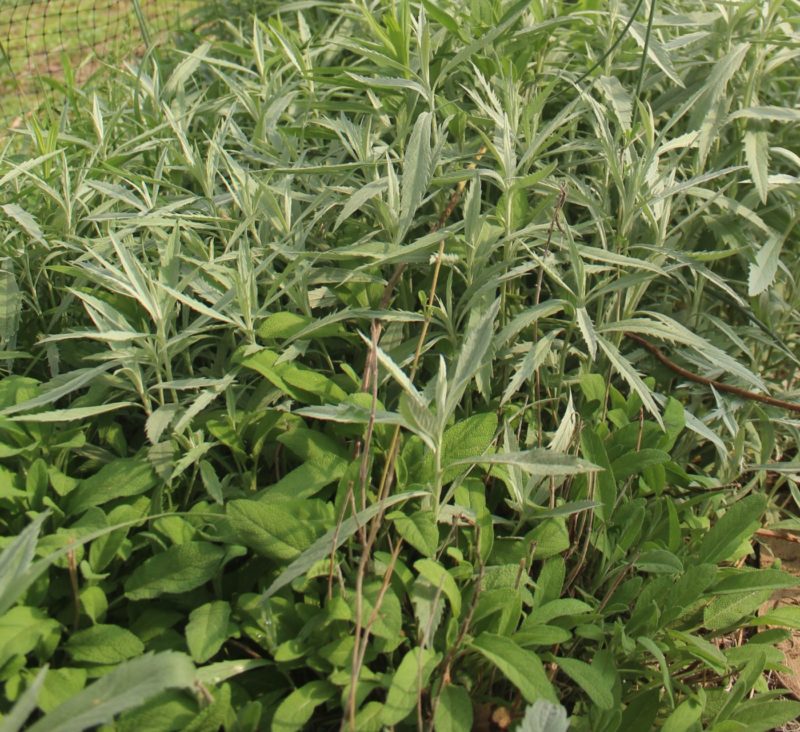
Sages are mints, and we all know what that means. They can get out of control. White sage that has proper growing conditions will spread rapidly.
Consider growing white sage in an area of the garden where it will not encroach on other plants. Or you can plant it in a raised bed or a pot sunk into the ground. Remove the bottom from the pot so that the taproot can get to the subsoil.
If you can’t give sage its own little garden spot, feel free to aggressively prune the plant back once a year in the late fall or early winter. Don’t prune below the node joint where new leaves sprout. Pruning at this spot will encourage branching and new growth.
Problems and Solutions for Growing White Sage
Aphids and Whiteflies
The two big sapsuckers, aphids and whiteflies, love white sage. The leaves are fleshy, which is something these two pests crave. Neem oil works well on these two trouble makers.
Powdery Mildew
Powdery mildew is a common problem for many of us. It is easy to recognize by the white blotches covering the leaves of your plants. Powdery mildew is fungal spores which travel via the air, making it contagious.
Make sure your plants have good air flow. One of the hard parts of growing my white sage in the greenhouse is lack of air flow. Good air circulation is vital in preventing powdery mildew.
White sage is native to a dry, hot climate. That means it’s susceptible to those humid loving funguses and mildews. Spray neem oil in the late evening when the weather is cooling down. Make sure you spray the undersides of the leaves where pests hide, because they can spread fungi and viruses.
Rust
Rust is another fungal disease that attacks white sage. This fungus shows up as yellow or white spots on the top of the leaves and orange spots on the bottom. Remove infected leaves and make sure you water from the bottom and not overhead.
Companion Planting
White sage has deep taproots which go in search of water and nutrients. As a result, it helps brings up nutrients from the subsoil and is beneficial for the other plants around it. Plant it next to other dry soil-loving plants like oregano and rosemary.
Harvesting and Storing White Sage
Once your plant has become established, you can start harvesting. Don’t remove more than 30% of new growth in the first year.
Use a pair of sharp scissors or pruners to cut your white sage so that you don’t damage the stems. Avoid trimming the woody part – stick to removing the softer, green growth.
Harvest in the early afternoon when the sun is shining because this is the time when the highest level of oils is present in the leaves.
Air drying is best for white sage. To dry, you can hang a bundle up on a door or wall as I do. This gives you the benefit of a nice smelling room. Or you can place the leaves and stems on a mesh screen in a cool, dry area.
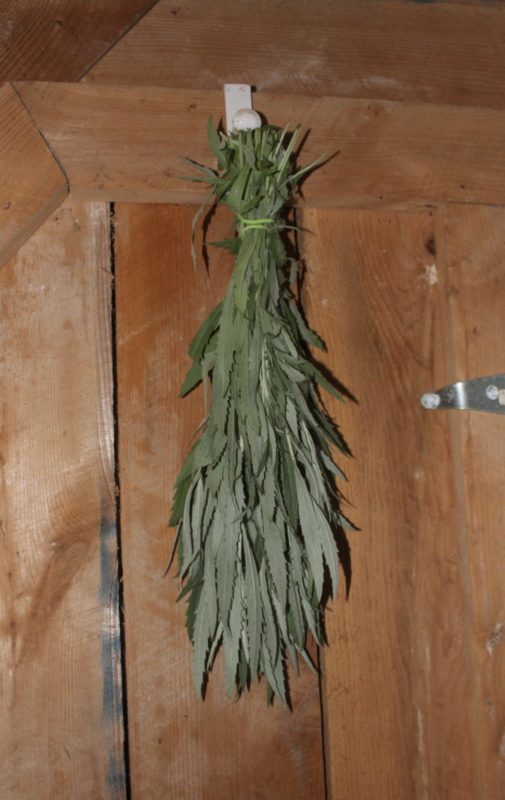
Most people don’t realize it, but you can eat white sage as you would common sage.
Medicinal Qualities
The leaves of white sage high eucalyptol content and Native people would chew it to freshen and cleanse the mouth, and to help ward off heat stroke.
Fight Colds
White sage has historically been ingested to fight colds and chest congestion because the eucalyptol content helps to clear the airways. I find the best way to use it is to breathe in the vapors.
To release the vapors, boil the white sage for ten minutes and then remove from heat. With a towel draped over the head breathe in the steam coming from the pot. Be careful not to burn yourself.
Other Uses
Native Americans in California and Mexico used white sage as a body wash and shampoo. You won’t believe how wonderful homemade white sage soaps and conditioners smell.
Some native cultures chew white sage to ease indigestion and to help with menstrual issues. You can also make an antiseptic poultice with the leaves.
Smudging
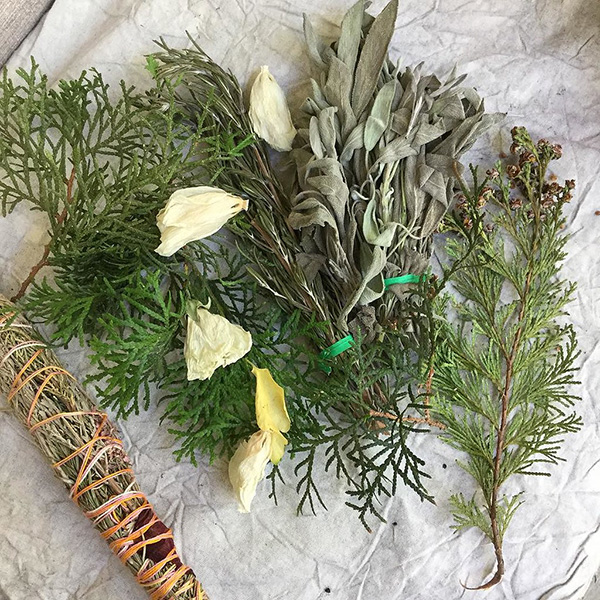
Smudging originated with the native peoples of the southwest. It spread among Native American cultures and was incorporated into their religious practices. Today smudging is popular with many neo-pagan groups and Wicca followers.
Smudging, or smoke cleansing, is a way to purify an area such as a room or home. It can also be used for cleansing a person.
Cleansing means to rid the body or home of negative energies and to protect the people, animals and the home.
How to Smudge
First, gather and dry your white sage. Once it has dried, it can be burned. White sage works well for smudging because it burns slowly and creates steady smoke, which is necessary for the ceremony.
While you can do a smudging with a single leaf, you can get a longer, larger smoke output if you bundle the sage together and tie it with cotton twine. Line up partially dried sage branches with the stalks on one end, press the bundle tightly together, and wind the string up the bundle at an angle. Once you reach the top come back down with the twine pointed in the opposite angle, so that you form x’s with the twine. Tie it tight and let it dry.
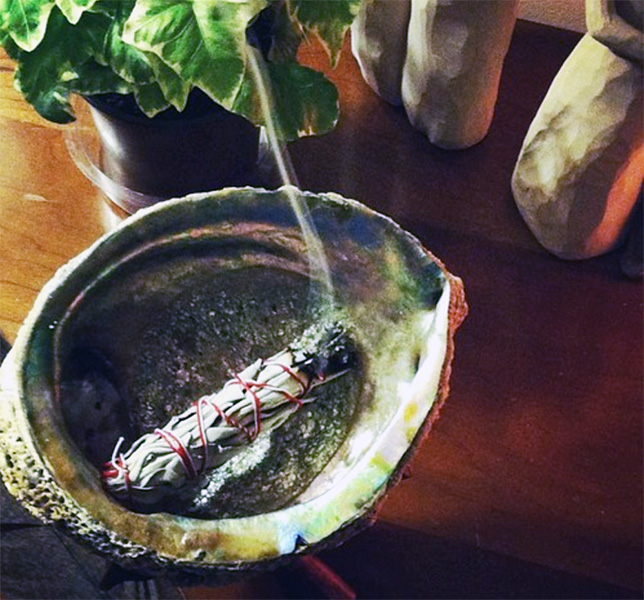
During the smudging ceremony, the dried sage is typically placed in a shell or ceremonial dish. You can also light the end of the sage and hold it in your hand. As it burns, the holder walks around the location and wafts the smoke over their head and in the direction of objects needing protection or cleansing. You can cleanse people as well as places, and experienced practitioners suggest you start by cleansing people before you cleanse places.
To cleanse a person, move the smoking bundle around the person’s body, starting at one foot, up the entire body, and down the other side, ending at the opposite foot. Then cleanse the back of the body, moving to the front, and ending at the heart.
To cleanse a room, start at the far corner and work your way out of the room so that negative energy is pushed out.
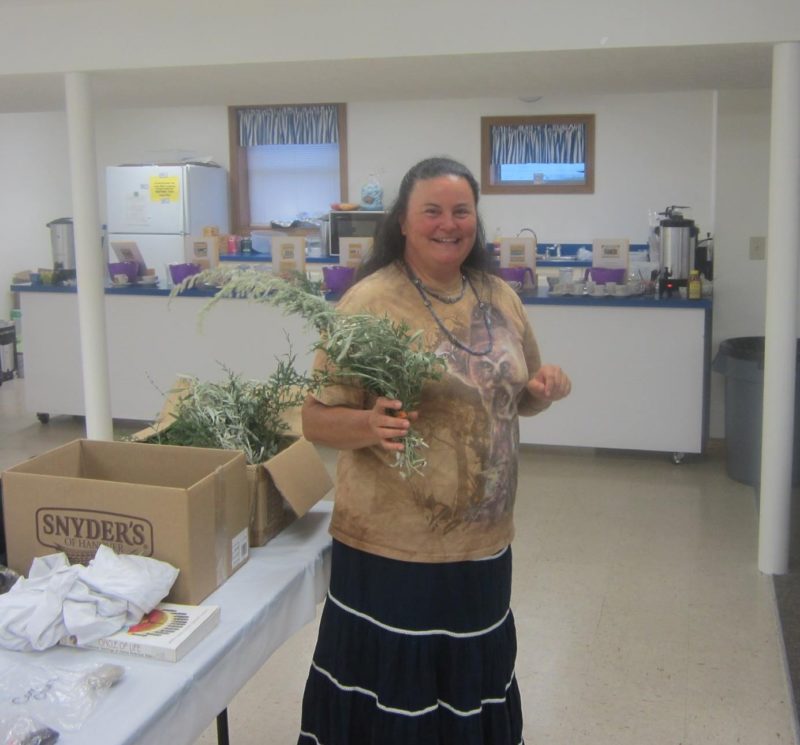
Once you are done, press the tip of the smudging stick gently into the shell or container to extinguish it.
White sage is becoming increasingly endangered in the wild because so many people are interested in using the leaves in smudging, so not only will you improve your garden by growing white sage, but you’re helping the environment. You could even sell white sage at your local farmer’s market and make some cash. Are you ready to give growing white sage a go? Be sure to share your experiences with us in the comments.

